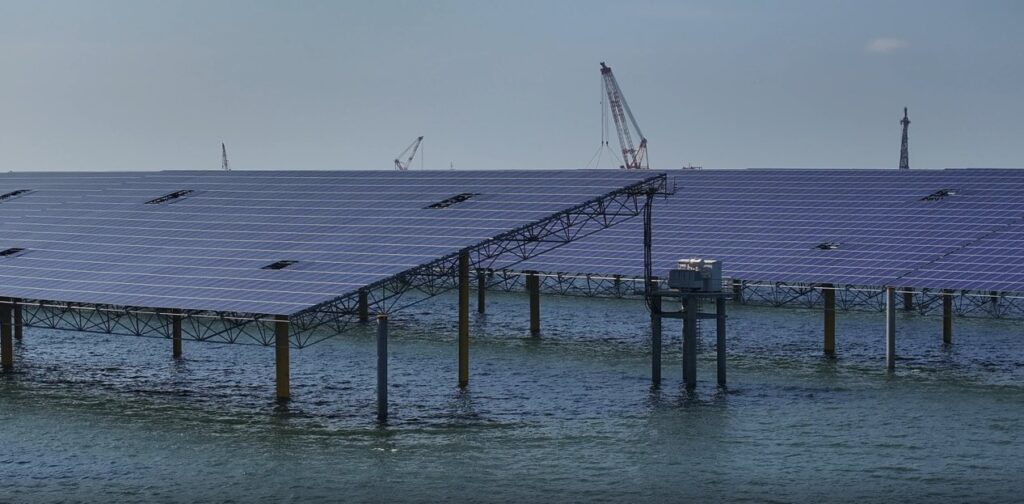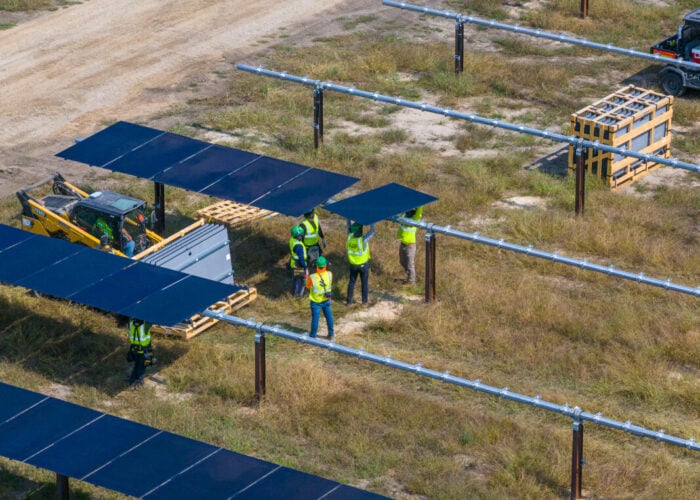
Chinese renewable power developer CGN New Energy Holdings has commissioned a 400MW offshore floating solar project in Laizhou Bay, the first large-scale deep-water offshore solar project in the country.
Located in the Bohai Sea, near Zhaoyuan City in the province of Shandong, the project covers 6.4 square kilometres and consists of 121 PV sub-arrays. Chinese module manufacturer Grand Sunergy provided its Seapower series of modules for the project, bifacial panels that use heterojunction (HJT) cells to maximise electricity output.
Try Premium for just $1
- Full premium access for the first month at only $1
- Converts to an annual rate after 30 days unless cancelled
- Cancel anytime during the trial period
Premium Benefits
- Expert industry analysis and interviews
- Digital access to PV Tech Power journal
- Exclusive event discounts
Or get the full Premium subscription right away
Or continue reading this article for free
The manufacturer notes that its modules use rubber edge sealing and a waterproof junction box to improve the modules’ resiliency in an environment where electricals can become damaged by high humidity and the threat of salt spray. The company claims that the presence of the edge sealing processes means the modules’ water permeability has been reduced by 99.9% “compared to industry standards”.
Considering China’s dominance of the global solar sector, the commissioning of the country’s first utility-scale deep-water floating PV project is an important milestone for the country’s solar industry. Figures from S&P Global suggest that floating solar projects will play a larger role in China’s energy mix, with more than 3.5GW set to come online by 2030. China and India are expected to account for the majority of new floating capacity additions, collectively accounting for 43% of the 20GW S&P Global expects to be commissioned by the end of the decade.
Floating solar developments have seen increased attention in recent months, with developers keen to maximise solar electricity generation without taking up large swathes of land, an increasingly scarce resource as solar projects become larger. For example, earlier this month, Malaysian firm Cypark Resources Berhad commissioned a 100MW solar project, which includes 35MW of floating solar.
This drive towards new floating solar projects is clear in Europe, too, with developers in Italy and the Netherlands announcing plans to install more than 100MW of new floating solar capacity.






